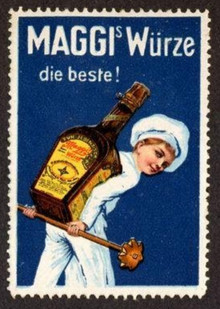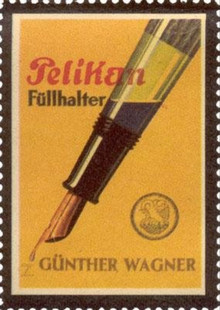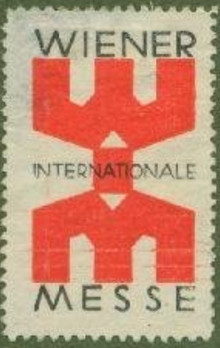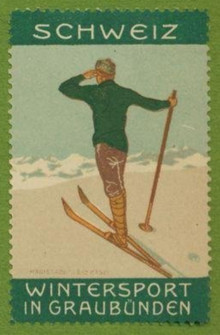Prof. Günter Schweiger's Poster Stamp Collection
In 1974, a collection of more than 18,000 advertising stamps was rediscovered at the former Institute for Advertising Science and Market Research at the Vienna University of Economics and Business – now the Institute for Marketing & Consumer Research. In 1997, the exhibition "The Brand around 1900" was organised in cooperation with the Austrian National Library. The great success of the exhibition and the importance of the collection gave rise to the idea of creating a digital archive of advertising stamps, which was supported by the KR Wilhelm Wilfling Foundation. As the original archive no longer met current technological standards, it was integrated into the University Library's digital collections.
The digital collection of advertising stamps is divided into two main areas: Firstly, it is possible to browse the complete pages of each folder and album, and secondly, it is possible to view each stamp individually, with the corresponding metadata. The image quality of each stamp is not consistent, so lower quality images will gradually be replaced by higher resolution versions. Higher resolution images can also be provided on request.
A glance into the history of poster stamps
Around 1850, as correspondence became standardized, the concept of affixing a stamp to ease the sealing of letters emerged. This innovation was inspired by the shape and function of traditional wax and varnish seals commonly used at the time. The design and format of stamps were adapted, leading to the introduction of the first sealing stamps in the mid-19th century, which, as the name suggests, were primarily utilized for sealing letters.
The 19th century was characterized by industrialization, the beginning of mass production leading to the growing significance of branded goods. As a result, advertising became increasingly important. Entrepreneurs quickly recognized the potential of the sealing stamp as a tool for conveying their advertising messages. This is how the cap stamp became the poster stamp.
Poster stamps flourished as a means of advertising from around 1900 to 1914, promoting products, services, and events. Widely utilized on an international scale, they advertised trade fairs, exhibitions, congresses, and various other events across the globe. The motifs featured on these stamps were diverse, reflecting the world around 1900. They depicted landscapes and cities, modes of transportation by land and sea, the conquest of the skies, contemporary fashion, or everyday products. They provide information about successful companies, continuous brand management or even products and brands that no longer exist today.
Poster stamps were also added to products and served as an incentive to buy. As a veritable collecting boom developed around the poster stamp, they evolved into an important tool for sales promotion. Consequently, in addition to traditional poster stamps bearing references to brands or companies, “collector's pictures” were also issued. These collector’s pictures for instance comprised series of copies, enticing consumers to collect the entire set. This strategy aimed to foster repeat purchases and cultivate brand loyalty among consumers.
Collectors stored their pieces in albums, notebooks, or simply loose in small boxes. After the First World War, new forms of media emerged, such as radio. Newspapers and magazines became more prominent advertising platforms. Poster stamps went out of fashion and were slowly forgotten. Only a fraction of the collections survived. However, towards the end of the 20th century, these once-forgotten poster stamps were rarities, and became sought-after collectibles once again.
Graphic design of poster stamps
To maximize the advertising impact within the constraints of their small size, the graphic design of poster stamps played a pivotal role. Despite their limited space, they conveyed messages akin to those found on posters and advertisements.
A plethora of artists and commercial designers contributed to the creation of poster stamps, including renowned names such as Lucian Bernhard, Peter Behrens, Ernst Deutsch, Fritz Hellmuth Ehmcke, Thomas Theodor Heine, Koloman Moser, Alfons Maria Mucha, Egon Schiele, Franz von Stuck, Joseph Urban, Leon Lico Amar, Julius Gipkens and Max Eschle.
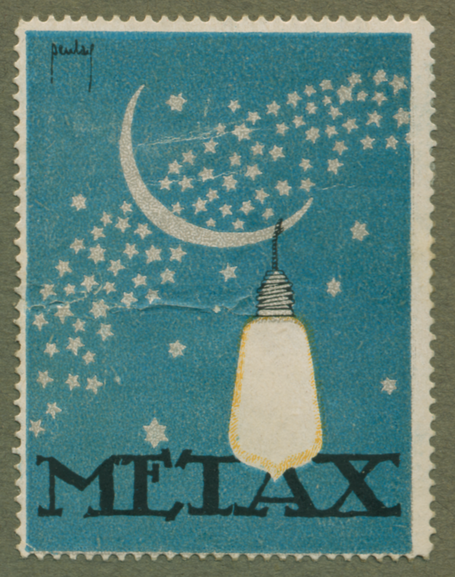
Ernst Deutsch
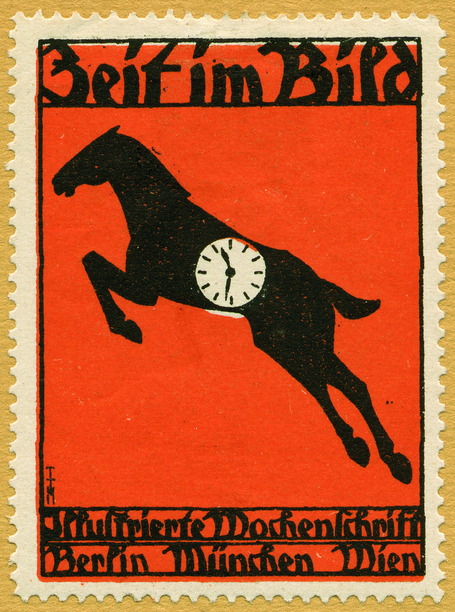
Thomas Theodor Heine

Alfons Maria Mucha
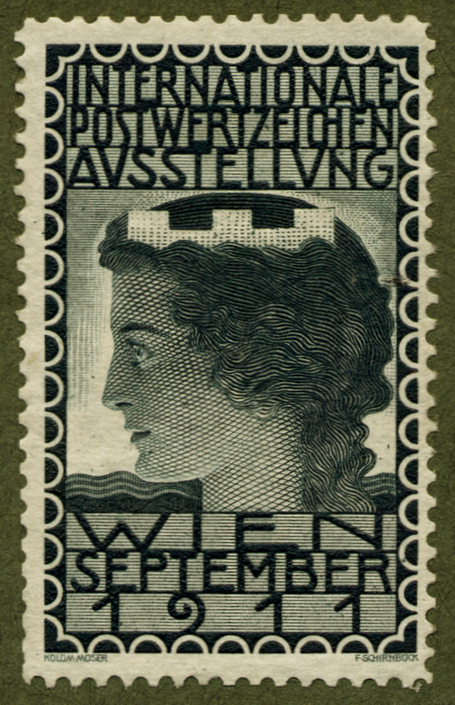
Koloman Moser
Some companies had a dedicated team of graphic artists who designed both posters and poster stamps. The extensive pool of artists, coupled with the widespread adoption of poster stamps across various industries, accounts for the diverse range of stamp motifs available.
The majority of poster stamps were unsigned, resulting in a lack of information about their creators.
Types of poster stamps
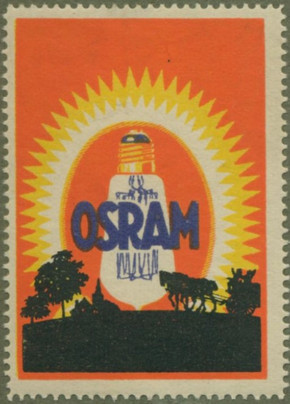
Poster stamp
The original purpose of the poster stamps was to seal letters. However, they were only used as pure sealing stamps for a short time and soon became a sought-after collector’s item. Primarily, they functioned as advertising stamps, promoting various products. They were produced both as individual stamps and as complete series.
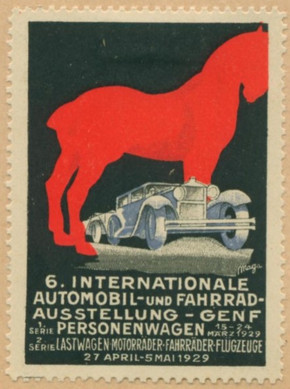
Occasion stamp
Occasion stamps constitute a subgroup within the broader category of advertising stamps. As the name implies, they were designed to promote specific occasions, to celebrate an anniversary or to act as an advertising medium for exhibitions, events (e.g. local festivals), trade fairs and congresses. Exhibition stamps were often a smaller version of the poster advertising the exhibition.
exhibition
event
congress
trade fair
anniversary
commemorative days
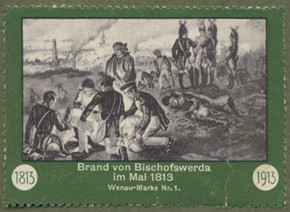
Military stamp
Military stamps emerged as a propaganda tool following the significant rise in popularity of advertising stamps. Typically, these stamps featured depictions of the founders or commanders of individual regiments or troops. During the First World War, some military stamps were issued with proceeds directed toward charitable endeavors.
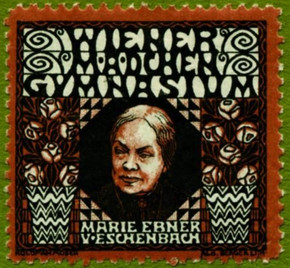
Charity stamp
Charity stamps can be categorized as both sealing stamps and advertising stamps. What distinguishes them is their contribution to charitable causes through their sale.
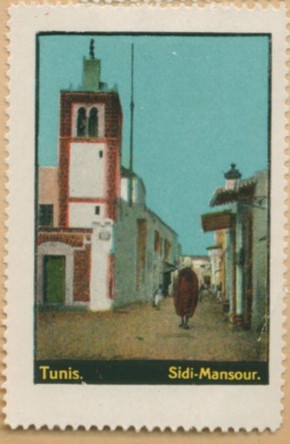
Collectible pictures
To incentivize repeat purchases, collectible pictures, such as merchant’s pictures, vending machine pictures, or advertising plates, were often included with goods as a gift. This practice aimed to encourage customers to return for additional purchases. Subsequently, the impact was amplified by releasing series of collectible pictures.

Seal
Initially, round or oval stamps, often printed and embossed in multiple colors, were primarily utilized by government offices and other official entities. Later, the seal stamp was also used by private individuals or businesspeople who employed them for their advertising purposes.
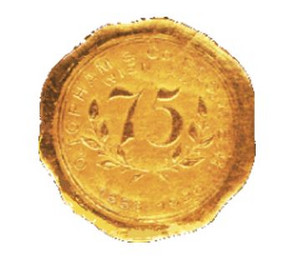
Signet
Signets, dating back to the 15th century, refer to the marks of printers and publishers. Initially, signets denoted the origin or copyright of a work. However, over time, they came to serve other advertising purposes as well.
The most outstanding advertising stamps in the collection are presented in the book Schweiger G., Spicko G., “Die Reklamemarke – Das Werbemittel der Gründerzeit”, published by Bibliophile Edition (ISBN: 9783950205282). This text consists of extracts from this work.

